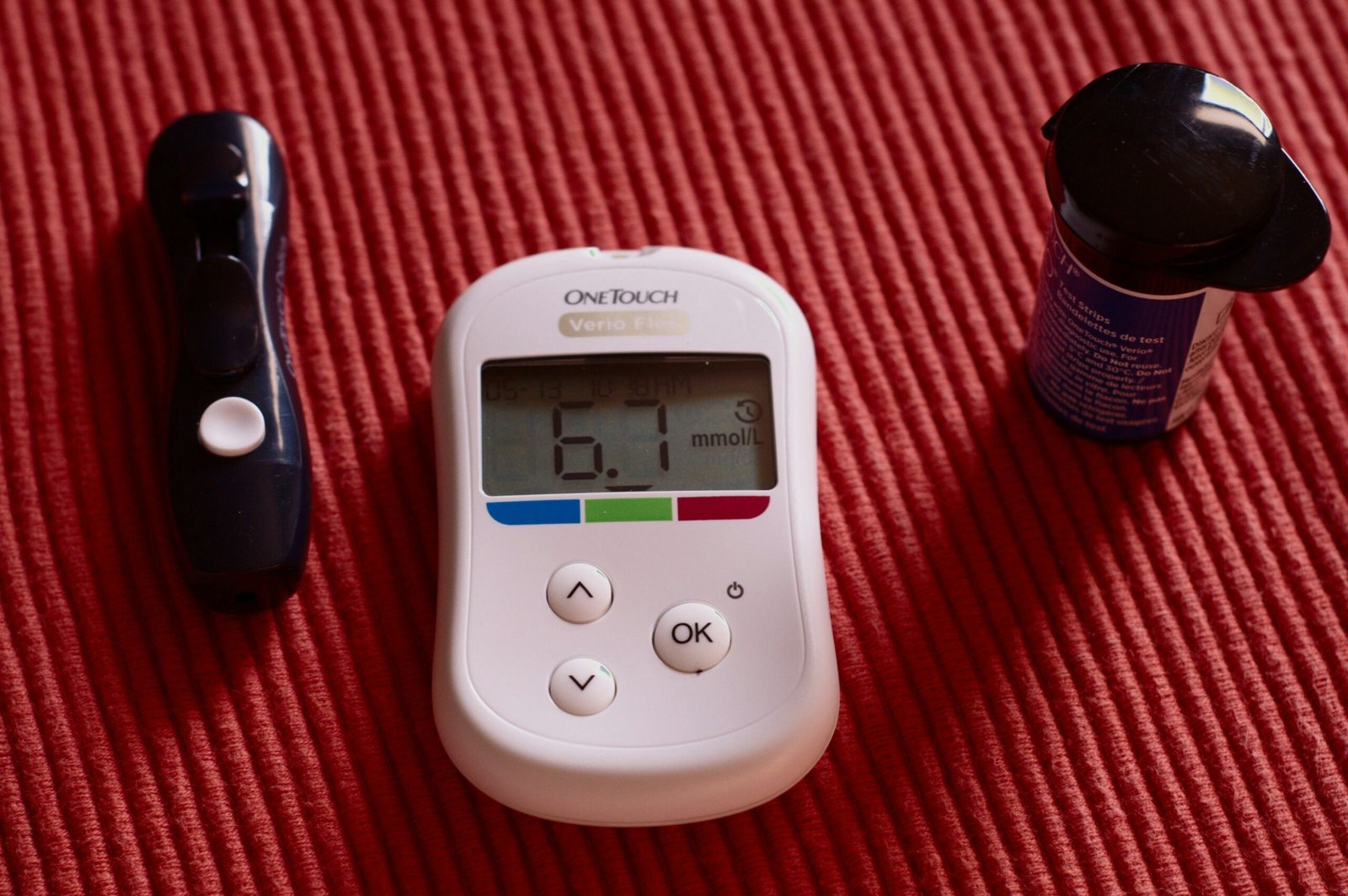Table of Contents
Blood sugar spikes can be dangerous for both diabetics and pre-diabetics, leading to complications that affect overall health.
These sudden increases in blood glucose occur when the body struggles to process sugar efficiently. Preventing these spikes is essential for maintaining steady energy levels, avoiding long-term damage, and improving quality of life.
Understanding Blood Sugar Spikes
A blood sugar spike happens when glucose levels rapidly rise after consuming carbohydrates, especially refined sugars and processed foods.
The body releases insulin to regulate blood sugar, but in individuals with diabetes or insulin resistance, this process is inefficient. Frequent spikes can lead to long-term issues such as nerve damage, cardiovascular disease, and kidney problems.
Several factors contribute to blood sugar spikes, including diet, lack of physical activity, stress, and poor sleep. Understanding these triggers is the first step in preventing fluctuations and maintaining stable glucose levels.
Choose the Right Carbohydrates
Not all carbohydrates are created equal. Simple carbohydrates, found in white bread, pastries, and sugary drinks, digest quickly and cause sharp increases in blood sugar. On the other hand, complex carbohydrates, such as whole grains, legumes, and vegetables, break down more slowly, providing sustained energy and preventing sudden spikes.
Best Carbohydrate Choices:
- Whole grains (quinoa, brown rice, whole wheat bread)
- Legumes (lentils, chickpeas, black beans)
- Non-starchy vegetables (broccoli, spinach, peppers)
Carbohydrates to Limit or Avoid:
- Refined grains (white rice, white bread, pasta)
- Sugary foods (cakes, cookies, candy)
- Sugary drinks (soda, fruit juices, energy drinks)
Replacing high-glycemic foods with fiber-rich alternatives helps slow digestion, reducing blood sugar fluctuations.
Pair Carbohydrates with Protein and Healthy Fats
Combining carbohydrates with protein and healthy fats helps slow glucose absorption, preventing spikes. Protein-rich foods such as lean meats, eggs, and tofu provide steady energy, while healthy fats from nuts, seeds, and avocados support insulin sensitivity.
For example, instead of eating a plain slice of bread, pair it with peanut butter or avocado to balance blood sugar levels.
Smart Meal Combinations:
- Oatmeal with nuts and chia seeds
- Whole wheat toast with almond butter
- Grilled chicken with quinoa and roasted vegetables
Stay Active Throughout the Day
Physical activity plays a crucial role in blood sugar regulation. Exercise helps muscles absorb glucose for energy, reducing excess sugar in the bloodstream. Even light activity, such as walking after meals, can improve insulin sensitivity and lower post-meal glucose levels.
Tips for Staying Active:
- Take a 10-minute walk after meals
- Engage in strength training twice a week
- Incorporate low-impact activities like yoga or swimming
A sedentary lifestyle can contribute to insulin resistance, so finding ways to stay active throughout the day is essential.
Prioritize Fiber-Rich Foods
Fiber slows down digestion and glucose absorption, reducing the likelihood of spikes. Soluble fiber, found in oats, beans, and flaxseeds, is particularly beneficial for blood sugar control.
High-Fiber Foods to Include:
- Chia seeds and flaxseeds
- Leafy greens and cruciferous vegetables
- Berries (blueberries, raspberries, strawberries)
Adding fiber to meals helps maintain stable energy levels and improves digestive health.
Manage Stress Effectively
Chronic stress triggers the release of cortisol, a hormone that raises blood sugar levels. Learning to manage stress can prevent unnecessary fluctuations and support overall well-being.
Stress-Reduction Techniques:
- Mindfulness meditation to promote relaxation
- Deep breathing exercises to lower cortisol levels
- Regular physical activity to release tension
Engaging in activities that bring joy, such as reading, gardening, or socializing with loved ones, can also help reduce stress.
Improve Sleep Quality
Poor sleep can negatively impact blood sugar control, leading to higher glucose levels in the morning. Establishing a consistent sleep routine is essential for metabolic health.
Sleep Tips for Better Blood Sugar Control:
- Maintain a consistent sleep schedule
- Limit screen time before bed to improve melatonin production
- Create a comfortable sleep environment (cool, dark, and quiet)
Adequate sleep supports insulin function and helps the body regulate glucose more efficiently.
Stay Hydrated
Dehydration can lead to higher blood sugar levels because the body produces more glucose in response to fluid loss. Drinking enough water helps the kidneys flush out excess sugar and maintain proper hydration.
Hydration Strategies:
- Drink at least 8 glasses of water daily
- Avoid sugary beverages that contribute to spikes
- Include herbal teas for added health benefits
Monitoring hydration levels and making conscious efforts to drink water throughout the day can prevent unnecessary blood sugar fluctuations.
Monitor Blood Sugar Levels
Keeping track of blood sugar levels helps identify patterns and triggers. Using a glucometer or continuous glucose monitor (CGM) can provide insights into how food, exercise, and stress impact glucose levels.
Blood Sugar Monitoring Tips:
- Check levels before and after meals
- Keep a food diary to track responses to different meals
- Consult with a healthcare professional to adjust lifestyle habits
Self-monitoring allows individuals to make informed decisions and adjust habits accordingly.
Avoiding blood sugar spikes requires a combination of mindful eating, regular physical activity, stress management, and good sleep hygiene.
By making small, consistent lifestyle changes, diabetics and pre-diabetics can maintain stable glucose levels and improve overall health. Implementing these strategies not only prevents complications but also enhances daily energy levels and well-being.

Leave a Reply